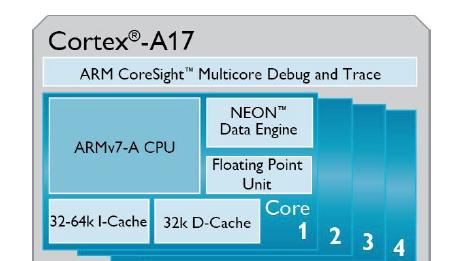mali
Latest

An email typo has reportedly sent millions of US military messages to Mali
A typo has reportedly routed millions of US military emails — some containing highly sensitive information — to Mali. The problem stems from entering .ML instead of .MIL for the receiving email address domain. As reported by the Financial Times, the one-letter mistake has exposed data like “diplomatic documents, tax returns, passwords and the travel details of top officers” — and much more. Although the misdirected emails have (so far) landed with a contractor tasked with managing Mali’s country domain, control of .ML will soon revert to Mali’s government, which has ties to Russia.

Google says Google and other Android manufacturers haven't patched security flaws
Google's Project Zero team says that Samsung, Xiaomi, Oppo and Google haven't deployed patches for vulnerabilities months after ARM issued fixes for them.

ARM's first v9 CPUs are built for computers, not just phones
ARM has unveiled v9-based CPU designs (and matching GPUs) that are aimed at performance for computers as well as smartphones.

ARM display chip design could lead to better stand-alone VR
Now that stand-alone virtual reality has become more of a... reality, ARM wants to eliminate some of the technology's remaining headaches. It's launching a new display chip design, the Mali-D77, that aims to both fix visual artifacts and improve performance. It can reduce motion sickness by re-projecting scenes (to adjust for the headset's position) and correcting lens artifacts like distortion and chromatic aberration. Your VR headset might also last longer on battery power -- ARM expects a 12 percent power savings and a 40 percent drop in bandwidth.

ARM's new mobile processors are built for AI on the go
When ARM showed up at Computex last year, it brought a bundle of smartphone processors that pushed for better mobile VR. As you might've noticed, though, AI is one of the big new trends in mobile this year. Is it any surprise, then, that ARM is pushing that angle with its latest batch of silicon?

US builds a $100 million African drone base to fight Boko Haram
The Department of Defense announced on Friday that it is investing $100 million in a drone base located in Agadez, in central Niger. The base will serve as a central surveillance hub in the fight against both Boko Haram and roaming militant groups linked to al Qaeda.

ARM's latest graphics core will speed up your smartwatch
Let's be blunt: the graphics in most smartwatches suck. They're frequently limited to basic effects, and you'll sometimes see the kind of stuttering that has long-since disappeared on your smartphone. ARM aims to fix that, however. It's launching the Mali-470, a mobile graphics core that's virtually tailor-made for smartwatches, the internet of things and anything else where battery life is the top priority. The GPU supports the flashy per-pixel visual effects you see on modern phones (OpenGL ES 2.0, to be exact), but it uses half as much power as the long-serving Mali-400 even as it runs faster-- you could see lively 3D animations that don't kill your watch within a few hours.

ARM's latest processor design puts fast 4K graphics on your phone
You've probably heard no end of hype for 4K video on TVs and computers, and now it's about to invade your phone... at least, so long as ARM has its way. The company just took the wraps off of Cortex-A72, a processor reference design that promises a huge boost to computing power, especially when graphics come into play. Thanks to updates that include optimizations for an efficient 16-nanometer chipmaking process, 30 percent more memory performance and an 80 percent speedier graphics core (the Mali-T880), the A72 is about 3.5 times more powerful than ARM's earlier Cortex-A15. That's beefy enough to record 4K video at an extra-smooth 120 frames per second -- many current smartphones only manage 30FPS at best. You should get "console-class" gaming, too, and there's a promise of Google Now-style natural voice commands that don't depend on a distant server to interpret what you're saying.

With ARM's Cortex-A17 processor, midrange smartphones and tablets will be much faster
We already have a hard time finding fault with processing power in the mid-range smartphones and tablets currently on the market, but that doesn't mean they couldn't be even snappier. That's the goal of ARM, which has announced the latest Cortex processors, known as Cortex-A17, to address not only mobile devices in the midrange market, but Smart TVs and Over-the-Top devices as well. The 28nm A17 comes with big.LITTLE (the architecture used in Samsung's latest octa-core Exynos chips) support, and promises a 60 percent boost in performance over Cortex-A9. It's also paired with a Mali-T720 GPU, which offers OpenGL ES 3.0 support and plenty of optimizations for low-end Android devices. While ARM doesn't specify an actual timeframe for release, it says that we should expect a huge push for the A17 in 2015; in a separate release, MediaTek also tells us that its newest octa-core processor comes with Cortex-A17 tech inside and will be available in the second half of this year.

ARM and eyeSight optimize gesture control for mobile processors
Hands-free gesture control is no longer a novelty in the mobile space, but the required processing power limits what's currently possible. More sophisticated input may be close at hand, however, as eyeSight has just teamed up with ARM to optimize its gesture control for chips using Mali-T600 series graphics. By relying on the T600's general-purpose computing engine, eyeSight's software can now track 3D movement, facial expressions and finger gestures without a huge performance hit. While companies will have to build supporting apps and devices before we see eyeSight's technology in use, it could lead to Kinect-like control of phones and smart TVs using relatively ordinary silicon.

ARM sees 44 percent profit increase in Q1 2013, ships 2.6 billion ARM-based chips
ARM has had a great quarter -- again. This time it's seen pre-tax profits soar 44 percent, while revenues are up 26 percent (to $209.4 million) since the same period last year. The company's thanking the continued adoption of its low-power chip designs, encompassing smartphones, mobile computing and even digital TVs and wearable tech. The advanced tech within its ARMv8, Mali and big.LITTLE ranges has meant the company can command higher royalties per chip. In total, 2.6 billion ARM-based chips have made their way into the gadgets this quarter, an increase of 35 percent year-on-year, with embedded hardware up a hefty 50 percent since Q1 2012. It's seen even better performance from its Mali graphics processor shipments, which are up five times since the same period last year. As outgoing CEO Warren East notes: "Even low cost smart devices can contain multiple ARM-based chips and be based on ARM's advanced Cortex-A series technology and Mali graphics processors." With new friends on board for the near-future, the good times are likely to continue.

ARM sees 16 percent profit increase in Q4 2012, 21 percent increase in royalty payments
UK-based chipmaker ARM had yet another profitable quarter, announcing that the end of 2012 saw pre-tax profits of around $126 million -- an increase of 16 percent since the same period last year. Revenue totaled $262.8 million for Q4 and with a huge proportion of Android and iOS devices containing chip know-how from ARM, it continues to benefit from the smartphone boom. In fact, shipments of chips based on its processors totaled 2.5 billion in Q4 alone, while royalty revenue grew 21 percent year-on-year, thanks to successes with both its Cortex-A and Mali silicon series. ARM chief exec Warren East added that the company is "well positioned" to have a great 2013, too -- unless everyone stops buying phones all of a sudden.

Samsung's next-gen Exynos 5 Octa rumored to have only current-gen PowerVR graphics
There's nothing we can concretely do or say about the Exynos 5 Octa until it's in a device and in our hands. It's all just educated guesswork in the meantime, but that happens to be something AnandTech is rather good at. That site has reached the conclusion, based on "numerous sources," that the Octa probably uses a PowerVR 544MP3 GPU clocked at 533MHz. If true, this implies that the ARM Mali T-604 used in Exynos Dual devices like the Sammy Chromebook somehow couldn't meet Octa's needs, and that the higher-specced T-658 perhaps wasn't ready. It also suggests that Octa's graphical and GPU compute performance might lie somewhere between that of the third-gen iPad (A5X) and the fourth-gen (A6X). Frankly, a newer GPU would have been more exciting, especially given the appearance of PowerVR Series6 at CES, but big.LITTLE should still give us plenty to talk about when the new eight-core chip finally arrives.

ASUS MeMo Pad makes quiet post-CES debut, offers Jelly Bean and 16GB of storage for $150
Despite a strong showing of slates in 2012, ASUS showed precious few tablets at CES last week. Missing from the show? Its latest MeMo Pad -- a 7-inch 1024 x 600 tablet rocking Jelly Bean, 16GB of storage, a Mali 400 GPU, 1GB of RAM and a 1MP front-facing camera. ASUS didn't name the tablet by model number, but it's a dead ringer for the ME172V that slipped through GLBenchmarks last month, and fits the bill of a recent federal authorization. The new slab isn't quite as nice as the Nexus 7 its predecessor became, but at $150, it's a little easier on the wallet. ASUS also cautions buyers that the MeMo pad is a "tablet-only product," clarifying that it won't be getting a Transformer Pad-like keyboard dock -- assuming you could type on a 7-inch keyboard, that is. Check out the slate's official press release after the break.

Benchmarks hint at budget ASUS ME172V Jelly Bean tablet, 1GHz processor Mali 400 GPU
ASUS has been a strong force in the tablet game even before it set a new price-to-quality standard with Google's Nexus 7. It looks like the firm could be tightening the budget screw even further, if some recent GLBenchmarks are to be believed. The details are sparse, but outline a product with model number ME172V (which follows from its pre-Nexus smaller tablet line), that runs Android 4.1.1 Jelly Bean, sports a 1,024 x 552 (likely 1,024 x 600) resolution powered by a Mali 400 GPU and 1GHz chip. There's no indication on the number of cores, or, well, much else for that matter. Various rumors are keen to suggest there'd be support for microSD, which if true, would make it unlikely to be a Nexus. But a budget tablet by the same manufacturer, is likely enough for many people all the same.

Lenovo reveals K860 LePhone, quad-core Exynos and a 5-inch screen
It's been a pretty good week for Lenovo all things told, but the Chinese firms isn't stopping to congratulate itself too much. Today, it's business as usual, marked by the official arrival of the new K860 "Music Phone" aka LePhone. The quad-core 1.4GHz Exynos 4412 chip, Mali-400MP GPU, 5-inch (1,280 x 720) display, 1GB of RAM and slight 9.6mm-thick form should come together to sing a sweet song though. The 8-megapixel snapper is no slouch either, with support for 100 frames continuous shooting and 1080p video recording (plus there's a 2-megapixel camera around the front, too). If all this sounds like a recipe for battery-drain, there's a 2,250 mAh cell to help keep you going. This will all be running on Android 4.0.4, but currently no word on price or availability -- but it's not like there aren't any other large phones to think about in the meantime. Update: We got a little excited in the translation for a moment there. The "Music" (or Happiness -- both the same symbol) Phone is of course the LePhone we link to in the article.

ARM's Mali-T604 makes official debut, we get a first look at the next-gen GPU (hands-on video) (update: it's the Exynos 5)
Think those are some pretty slick graphics in your Galaxy S III? Samsung's latest smartphone packs some mighty graphics prowess of its own, thanks to the Mali-400 MP GPU, but once you spend a few minutes with the Mali-T604, the company's next-generation chipset, the improvements become quite clear. After seeing the Mali-T604 in action, as we did at SIGGRAPH today, the capabilities leave us hopeful for the future, and perhaps feeling a bit self-conscious about the silicon currently in our pockets. The reference device on hand was operating in sync with a variety of unnamed hardware, protected from view in a relatively large sealed box. We weren't able to squeeze many details out of ARM reps, who remained mum about the demo components, including clock speed, manufacturer and even fabrication size. What we do know is that we were looking at a quad-core Mali-T604 and dual-core ARM Cortex-A15 processor, with a fabrication size in the range of "28 to 40 nanometers" (confirming the exact size would reveal the manufacturer). Clock speed is also TBD, and the early silicon on demo at the show wasn't operating anywhere close to its top end. In order to experience the T604, we took a look at three demos, including Timbuktu 2, which demonstrates elements like self shadowing and depth of field with OpenGL ES 3.0, Hauntheim, which gives us an early look at physics simulation and HDR lighting with OpenCL, and Enlighten, which rendered silky smooth real-time illumination. You can see all of the demos in action after the break, and you can expect T604-equipped devices to make their debut beginning later this year -- ARM says its working with eight manufacturers to get the licensed tech to market as early as Q3. Update: ARM has just confirmed to us that this reference device is running off an Exynos 5 Dual chip (up to 1.7GHz), which means the following video is also a heads-up on what Sammy has in store for us in its forthcoming devices.%Gallery-161934%

ARM's eight-core Mali GPUs promise 'dramatic' boost to mobile graphics
The current flagship for ARM's mobile graphics technology is undoubtedly the Galaxy S III, which contains a quad-core Mali 400 GPU and delivers some wild benchmark scores. By the end of this year though, we should see a whole new generation of Malis -- not just a Mali 450 for mid-range handsets, but also the quad-core T604 and the eight-core T658, which are based on ARM's Midgard architecture and are taking forever to come to market. Now, to whet our appetites even further, ARM has just added three more variants of the chip to its roster, which can almost be considered the next-next-generation: the quad-core T624, and the T628 and T678, which are both scalable up to eight cores. The trio's headline feature is that they promise to deliver at least 50 percent more performance with the same silicon area and power draw, with the explicit aim of delivering "console-class gaming," 4K and even 8K video workloads, as well as buttery 60fps user interfaces in phones, tablets and smart TVs. The premium T678 is aimed at tablets specifically, and in addition to allowing up to eight cores also doubles the number of math-crunching ALUs per core, which means that its compute performance (measured in gigaflops) is actually quadrupled compared to the T624. However, there's one other, subtler change which could turn out to be equally important -- read on for more.

ARM claims new GPU has desktop-class brains, requests OpenCL certificate to prove it
It's been a while since ARM announced its next generation of Mali GPUs, the T604 and T658, but in the semiconductor business silence should never be confused with inactivity. Behind the scenes, the chip designers have been working with Khronos -- that great keeper of open standards -- to ensure the new graphics processors are fully compliant with OpenCL and are therefore able to use their silicon for general compute tasks (AR, photo manipulation, video rendering etc.) as well as for producing pretty visuals. Importantly, ARM isn't settling for the Embedded Profile version of OpenCL that has been "relaxed" for mobile devices, but is instead aiming for the same Full Profile OpenCL 1.1 found in compliant laptop and desktop GPUs. A tall order for a low-power processor, perhaps, but we have a strong feeling that Khronos's certification is just a formality at this point, and that today's news is a harbinger of real, commercial T6xx-powered devices coming before the end of the year. Even the souped-up Mali 400 in the European Galaxy S III can only reign for so long.

Gooseberry Android board plans to sate those still waiting on a Raspberry Pi (video)
If one of the aims of the Raspberry Pi was to embody the "do-it-yourself" ethos, then it's already succeeded. Annoyed at the wait for the education-friendly board to arrive, the anonymous creator of the Gooseberry decided to build their own. Looking reasonably similar to its inspiration, it's packing a 1GHz AllWinner CPU, 400MHz Mali GPU, 512MB RAM and 4GB of onboard storage. It'll go on sale in the UK for £40 ($63) shortly, running Gingerbread and is capable of running HD video -- as demonstrated by the video we've got for you after the break.










